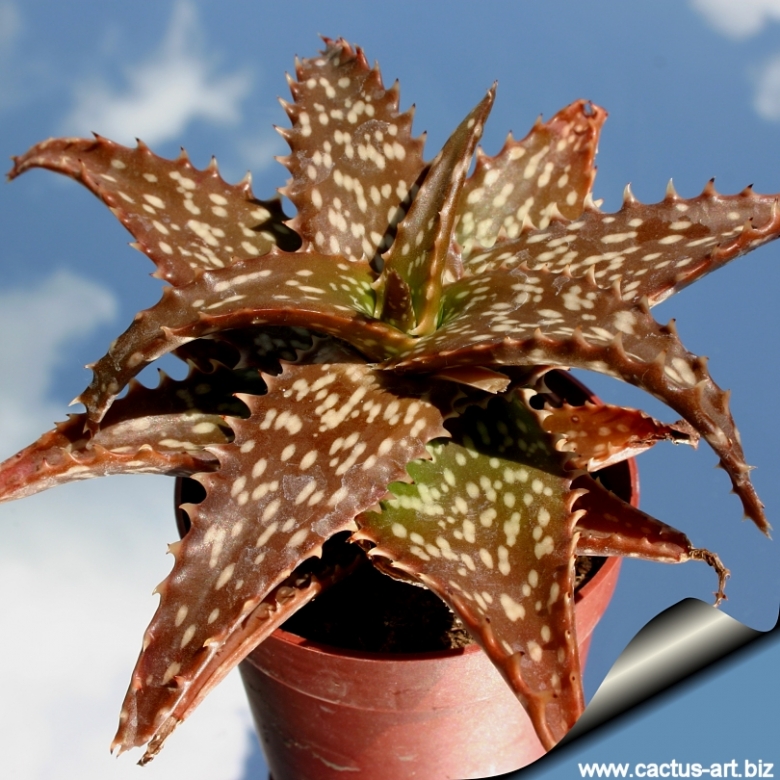
Aloe dorotheae Photo by: Cactus Art
It is a very spectacularly coluoured, suckering, and low-growing aloe. Leaves are often blushed lightly with coppery glints, but can become intense bright coppery-red in very bright light.
Origin and Habitat: Eastern Africa, Tanzania (Pangani Dist.)
Synonyms:
See all synonyms of Aloe dorotheae
back
Accepted name in llifle Database:Aloe dorotheae A.BergerNotizbl. Königl. Bot. Gart. Berlin 4: 263. 1907Synonymy: 2
back
Common Names include:
ENGLISH: Karoo Aloe, Aloe, Ramenas
Description: Aloe dorotheaeSN|617]]SN|617]] is a small, shrubby, rosettes-forming succulent, slowly offsetting it will form clumps up to 50 cm in width.
Stem: Virtually stemless or very shortly stemmed.
Leaves: In a spiralled rosette, tapering, lanceolate, recurving, that in time of drought it tends to curl in on themself. They are shiny that feel a bit like plastic, glossy green or green-yellow when young (or in shaded position), becoming orange to brown-red as the plant matures. The leaves in younger plants tend to have numerous elongated white spots scattered on the smooth surface, but these seem to fade with age. The leaf is bordered with short translucent white marginal ''teeth''.
Flowers: Simple spike (60 cm) with small red flowerlets , with a yellow-green trim at the outside edge.
Blooming season: Flowers come in early spring.
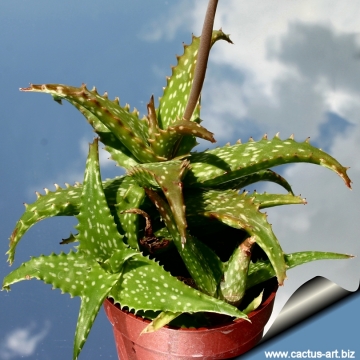 Aloe dorotheae Photo by: Cactus Art
Aloe dorotheae Photo by: Cactus Art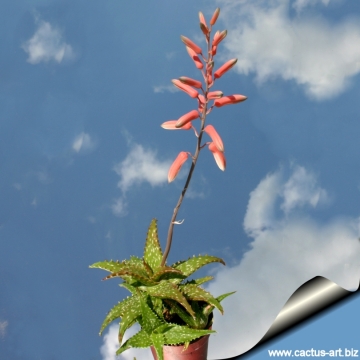 Aloe dorotheae Photo by: Cactus Art
Aloe dorotheae Photo by: Cactus Art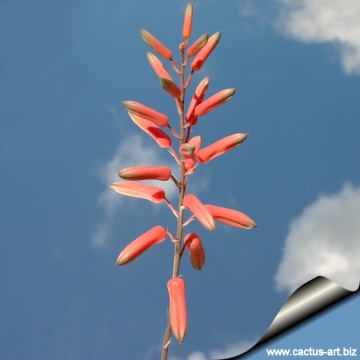 Aloe dorotheae Photo by: Cactus Art
Aloe dorotheae Photo by: Cactus Art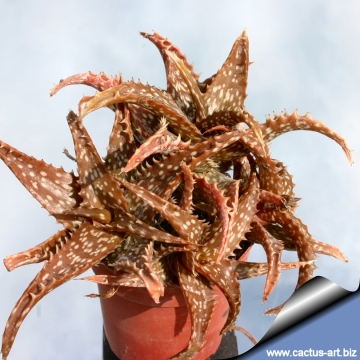 Aloe dorotheae Photo by: Cactus Art
Aloe dorotheae Photo by: Cactus Art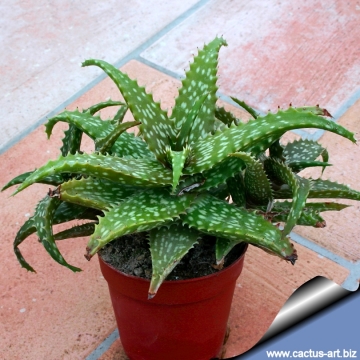 Aloe dorotheae Photo by: Cactus Art
Aloe dorotheae Photo by: Cactus Art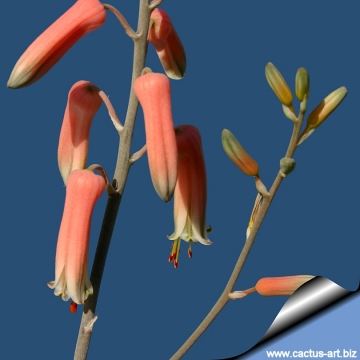 Aloe dorotheae Photo by: Cactus Art
Aloe dorotheae Photo by: Cactus Art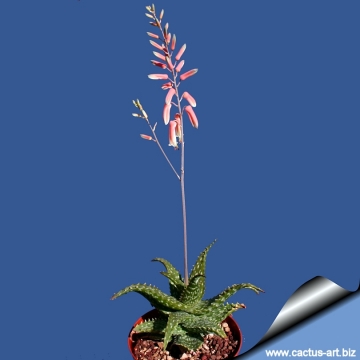 Aloe dorotheae Photo by: Cactus Art
Aloe dorotheae Photo by: Cactus Art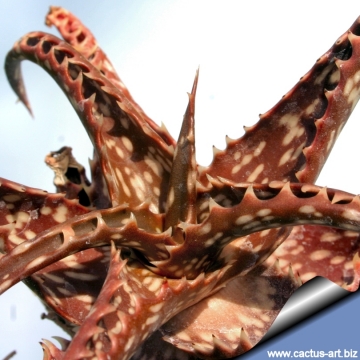 Aloe dorotheae Photo by: Cactus Art
Aloe dorotheae Photo by: Cactus ArtCultivation and Propagation: Easy to grow, requiring very little care. It can be grown in large containers. Always use a good quality, loamy sandy soil with plenty of drainage chips at the bottom of containers. It tolerates weekly watering in the summer; once a month, or not at all in the colder months of December and January. Can withstand long periods of drought, but they will thrive and flower more profusely if watered in the correct season. Incorrect watering, poor drainage or too much shade can lead to attack by pests and diseases. They can take a few degrees of frost in winter as well, but prefer hot summers. It grows much better outdoors in spring and summer.
In mild climates it can be cultivated outdoors for use in landscaping, preferably planting it in hot and dry rock gardens. They will grow best in regions with a climate close to that of their native deserts not too cold, and not too wet.
Propagation: Almost exclusively by seeds planted in autumn, in trays of coarse river sand.
Uses:
Gardening: Excellent on patio or as landscape or rock garden subject. This is a great aloe for rocky, exposed areas of the garden where you want some non-green colour.


















